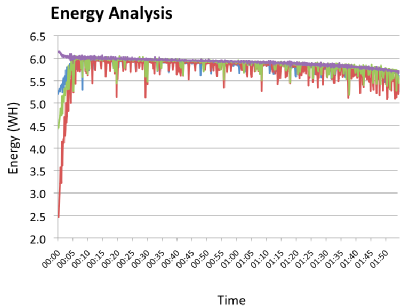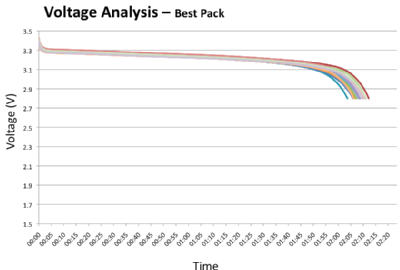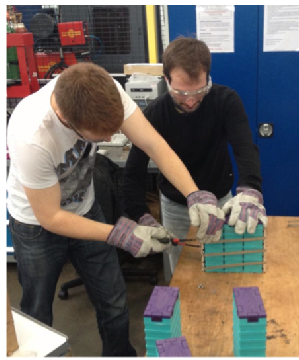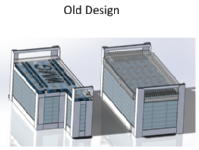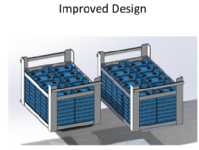Powertrain Optimisation
|
Battery Cycling and Matching: This is the process of stringent quality control for all of our cells. This year we have up to 93 cells to use to create our best two packs of 22 cells each which means we only require 44 of our total 93 cells for use in the race. By “matching” all of our best cells into packs we will gain roughly the equivalent of an entire cell per pack compared to the un-matched sets used last year without the weight of an extra cell. To allow us to do combine our cells into packs it is important they have all had a similar number of cycles. 44 of our cells were used by the team last year at the competition but our other 49 cells are brand new and therefore need cycling to bring them up to equivalent maturity. Once this process has been completed each of the cells are charged, discharged and the discharge results analysed to find our best cells. We have also found that careful construction of battery packs; such as ensuring all electrical contacts are clean reduces the unnecessary resistance. |
|
|
Re-packaging the Batteries: The current packaging of the batteries can be changed to gain a numbers of performance improvements. Firstly there is the weight of the pack as a whole, secondly there is the balancing of the kart and thirdly is the distribution of weight in the kart to allow efficient weight transfer. Compared to regular IC karts which have very little mass in the side-pod region of the kart, electric powered karts have the batteries in the side-pod region making the overall mass of the kart much higher and making the kart less nimble due to large weight distributed away from the centre-line of the kart. To allow us to make improvements and easily measure the change, we our improving the accuracy of the CAD model and ensuring the distribution of weight in our CAD model reflects the real world. This allows us to easily quantify the performance of each new design. New designs are also expected to include a cover that will make the casings water resistant and improve the airflow. |
|
|
Electronics Casing and Wiring Improvements: Improving the reliability of the electronics system will make vast improvements to the overall performance. This includes purchasing a better throttle, ensuring the wiring loom does not put tension on wiring connections and redesigning the electronics casing. The redesign of the electronics casing aims to make it water proof, maintain airflow for cooling, reduce weight and allow the kart to be deconstructed in a modular fashion. Reliability is one of the main issues the team had last year and reducing the number of failures will greatly improve race performance. |
|
|
Speed-controller, Motor and Race Startegy Optimisation: The motor we are using is a 3 phase brushless DC motors which is controlled by a complex speed controller. The system as a whole has the ability to provide more power than allowed for the competition and therefore can be programmed for greater efficiency and to make to make most use of the energy available from the batteries. The best way for us to do this to simulate the race conditions using the footage taken from last year’s race and study the power available throughout the race. This is done using a dynamometer and an independent power supply that produces consistent power. As part of this testing we will research the efficiency improvements that could be made using regenerative braking system however the use of regenerative braking will most likely be out of the scope for the improvements made to the kart this year. |
Warwick EVGP Testing 3.5.12 On-board GoPro Footage: http://www.youtube.com/watch?feature=player_embedded&v=KPtI17kcE2U# |

